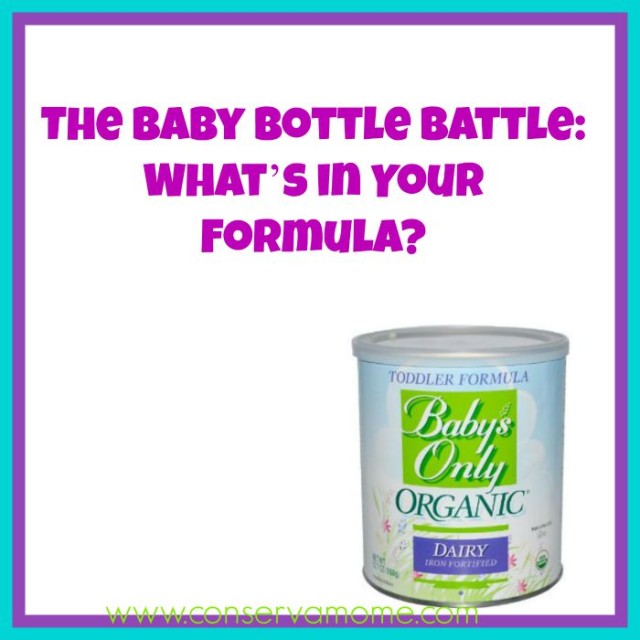Breast milk is one of nature’s miracles, there’s no doubt about it. Every year we discover more amazing ways a mother’s body creates the perfect food for her baby, boosting everything from immune responses to mental development.
Of course, not all women are able to breast feed, which can be scary and stressful when everything you read tells you that “breast is best!” Fortunately, if you’re one of the 40 percent of women who choose not to breast feed, you have plenty of other options. Nutritionists and pediatricians have been working together for decades to create baby formulas that are the best possible match for breast milk. Let’s take a look at what goes into a modern baby’s bottle…and a few things that definitely shouldn’t be in there.
The Building Blocks
Humans of any age get their energy from three main sources: carbohydrates, proteins, and fats. Babies’ need all of these, in the right ratios, to get the energy and nutrients they need to grow. The best formulas get their energy from four main sources:
- Lactose. Lactose is the main source of carbohydrates in breast milk, and it can be derived from cow’s milk as well. In addition to giving your baby energy, it helps their system absorb vital nutrients like calcium, potassium and magnesium: vital for growing strong bones and muscles!
- Nonfat dry milk. Milk solids are a great source of protein, but they’re one of the only sources of essential nutrients like vitamin A, a big player in the immune system and healthy vision, and vitamin B, which plays a role in everything from producing hair and skin to keeping your liver healthy.
- Whey protein. Milk solids are perfectly formulated to provide all the necessary protein…for baby cows. They’re still a great source of nutrition for baby humans, but they can be difficult for us to digest. Whey protein, on the other hand, contains many of the same proteins and is much easier on little tummies (and therefore their diapers, and therefore your nose.) Whey protein rounds out the protein content formula can’t get from milk solids.
- Fat blends. Non-fat everything may be at the top of the grocery list for grownups with grown up metabolisms, but babies still need all those healthy fats to grow! These heart-healthy unsaturated fats vary from formula to formula, but the most common source is palm oil. Palm oil also provides your baby with palmitic acid, a beneficial nutrient found in breast milk.
What to Avoid
The FDA has really cracked down on the quality of formula and the ingredients used in it over the last ten years, and formula is more reliable and safer than ever before. The biggest potential concern in formulas these days is trace contamination: tiny amounts of other chemicals or foods making their way into formula during the production process.
Here’s a few things to look for to avoid contamination and get the best quality for your kids.
- Consider organic. Three of the four building blocks of baby formula are dairy or dairy based, so you want to be sure of the quality of the cows they came from. Many parents prefer organic formulas like The Honest Company’s for this reason: all their dairy products are sourced from USDA certified organic cows. This means the cows and their milk have never been exposed to pesticides, antibiotics, or artificial hormones that could make their way into the formula.
- Be sure your formula is allergen free. Most formula is produced in a factory along with other food products, so it may be possible for common allergens like nuts and soy to contaminate the formula. Most production companies are extremely careful about this, since babies can be so sensitive to trace allergens: make sure your formula is labeled as guaranteed allergen free.
- Carrageen. There’s only one nasty additive still in use in the US. Carrageen is on its way out, after being banned in the European Union, but you should still make absolutely sure it hasn’t been used in your formula. Carrageen is a stabilizer that prevents separating, but it can also cause severe inflammation in your baby’s tummy and intestines. Steer clear of carrageen: the only downside is having to shake up your formula before using it!Don’t be discouraged or stressed if you can’t breast feed, or if you simply choose not to! Formula babies don’t suffer any disadvantages, especially not with the high quality organic formulas available in this day and age. With a little research, you’ll be able to keep your bundle of joy happy and healthy from a bottle and a case of the best powdered formula modern medicine can offer you.

Comments & Reviews
When I had kids, I tried nursing with some success. I eventually switched to formula. It is so expensive. Most women are young when they’re a new mother, I was 18 with my first. At the time it was hard to make ends meet.
Its so sad how expensive formula is and that our solution for free or “cheap” formula is always filled with nasty additives!! We are feeding this to our children!!! Companies make me sick! How fabulous for those that make an organic option!!
Good to know. I only use formula every now and then but it is still nice to have this info.
awesome post thank you
What a great option for those who can”t/don’t breastfeed.
Good article. I am glad there are more options for people who cannot breastfeed.
I didn’t realize that they made organic formula. It’s great to have that option!
So much to consider. Great post